Camilla Hoitenga, flute
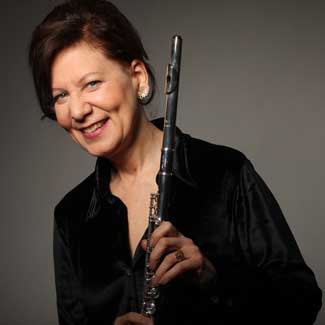
 Born in Grand Rapids, MI, flutist Camilla Hoitenga studied in the United States, England, and France and eventually made her home in Germany, where she worked several years with Karlheinz Stockhausen. Following her own “path less traveled” she cultivates a repertoire ranging from Bach and Schubert to concertos written for her by Kaija Saariaho, Pèter Koeszeghy or Ken-Ichiro Kobayashi; from Stockhausen’s theatrical Zungenspitzentanz for piccolo to Jean-Baptiste Barrière’s state-of-the-art pieces for live video and electronics to improvisations and recitals with pianist and sound-artist Taavi Kerikmäe. Whether accompanied by orchestras such as the Chicago Symphony or the London Philharmonic or playing alone on stage, Hoitenga captivates her audiences with intense performances, acclaimed by the press as “brilliant,” “alluring,” and “ideally transparent and precise.”
Born in Grand Rapids, MI, flutist Camilla Hoitenga studied in the United States, England, and France and eventually made her home in Germany, where she worked several years with Karlheinz Stockhausen. Following her own “path less traveled” she cultivates a repertoire ranging from Bach and Schubert to concertos written for her by Kaija Saariaho, Pèter Koeszeghy or Ken-Ichiro Kobayashi; from Stockhausen’s theatrical Zungenspitzentanz for piccolo to Jean-Baptiste Barrière’s state-of-the-art pieces for live video and electronics to improvisations and recitals with pianist and sound-artist Taavi Kerikmäe. Whether accompanied by orchestras such as the Chicago Symphony or the London Philharmonic or playing alone on stage, Hoitenga captivates her audiences with intense performances, acclaimed by the press as “brilliant,” “alluring,” and “ideally transparent and precise.”
Los Jornaleros del Norte
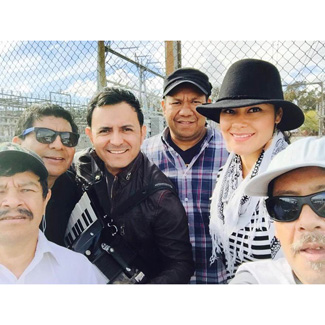
 It’s been 15 years since Los Jornaleros del Norte began singing about and for the worker and immigrant community in the United States. It was an immigration raid at a corner of day laborers in the City of Industry, California, which was the impetus for the creation of music and poetry of resistance for them. On that day, a day laborer and musician, Omar Sierra, wrote “El Corrido de Industry” which recounted the events of the raid. This inspired others to share their stories through song and with the help of Pablo Alvarado, founding member and Director of NDLON (National Day Labor Organizing Network), day laborers began to write, sing, and share their struggles and hopes through music and poetry. Since then, they’ve become the soundtrack for the day laborer and immigrant community’s struggle for visibility, inclusion, and equality. Their songs are a historical document of the experiences of the migrant worker community in the United States.
It’s been 15 years since Los Jornaleros del Norte began singing about and for the worker and immigrant community in the United States. It was an immigration raid at a corner of day laborers in the City of Industry, California, which was the impetus for the creation of music and poetry of resistance for them. On that day, a day laborer and musician, Omar Sierra, wrote “El Corrido de Industry” which recounted the events of the raid. This inspired others to share their stories through song and with the help of Pablo Alvarado, founding member and Director of NDLON (National Day Labor Organizing Network), day laborers began to write, sing, and share their struggles and hopes through music and poetry. Since then, they’ve become the soundtrack for the day laborer and immigrant community’s struggle for visibility, inclusion, and equality. Their songs are a historical document of the experiences of the migrant worker community in the United States.
Susan McClary, musicologist
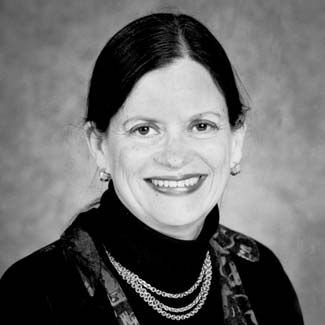
 Dr. Susan McClary (Professor of Music at Case Western Reserve University; Distinguished Professor Emerita, UCLA) focuses her research on the cultural criticism of music. Her books include Feminine Endings: Music, Gender, and Sexuality; Georges Bizet: Carmen; Conventional Wisdom: The Content of Musical Form; Modal Subjectivities: Renaissance Self-Fashioning in the Italian Madrigal; Reading Music; Desire and Pleasure in 17th-Century Music; and Structures of Feeling in 17th-Century Expressive Culture. McClary received a MacArthur Foundation “Genius” Fellowship in 1995, and her work has been translated into at least 20 languages. She is now completing a book titled The Passions of Peter Sellars: The Staging of Music Drama.
Dr. Susan McClary (Professor of Music at Case Western Reserve University; Distinguished Professor Emerita, UCLA) focuses her research on the cultural criticism of music. Her books include Feminine Endings: Music, Gender, and Sexuality; Georges Bizet: Carmen; Conventional Wisdom: The Content of Musical Form; Modal Subjectivities: Renaissance Self-Fashioning in the Italian Madrigal; Reading Music; Desire and Pleasure in 17th-Century Music; and Structures of Feeling in 17th-Century Expressive Culture. McClary received a MacArthur Foundation “Genius” Fellowship in 1995, and her work has been translated into at least 20 languages. She is now completing a book titled The Passions of Peter Sellars: The Staging of Music Drama.
Claudia Rankine, poet
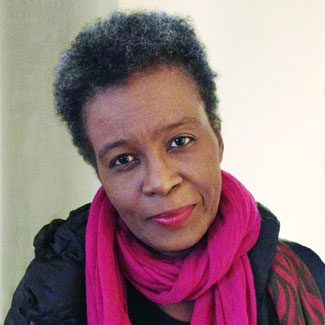
 Claudia Rankine is the author of five collections of poetry including Citizen: An American Lyric and Don’t Let Me Be Lonely; two plays including Provenance of Beauty: A South Bronx Travelogue; numerous video collaborations, and is the editor of several anthologies including The Racial Imaginary: Writers on Race in the Life of the Mind.For her book Citizen, Rankine won both the PEN Open Book Award and the Pen Literary Award, the NAACP Award, and the National Book Critics Circle Award for Poetry. Citizen was the first book ever to be named a finalist in both the poetry and criticism categories and was a finalist for the National Book Award. Citizen also holds the distinction of being the only poetry book to be a New York Times bestseller in the nonfiction category.
Claudia Rankine is the author of five collections of poetry including Citizen: An American Lyric and Don’t Let Me Be Lonely; two plays including Provenance of Beauty: A South Bronx Travelogue; numerous video collaborations, and is the editor of several anthologies including The Racial Imaginary: Writers on Race in the Life of the Mind.For her book Citizen, Rankine won both the PEN Open Book Award and the Pen Literary Award, the NAACP Award, and the National Book Critics Circle Award for Poetry. Citizen was the first book ever to be named a finalist in both the poetry and criticism categories and was a finalist for the National Book Award. Citizen also holds the distinction of being the only poetry book to be a New York Times bestseller in the nonfiction category.
Among her numerous awards and honors, Rankine is the recipient of the Poets & Writers’ Jackson Poetry Prize and fellowships from the Lannan Foundation and the National Endowment of the Arts. She lives in California and is the Aerol Arnold Chair in the University of Southern California English Department.
Roomful of Teeth
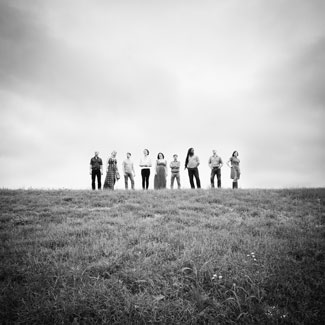
 Roomful of Teeth is a Grammy Award–winning vocal project dedicated to mining the expressive potential of the human voice. Through study with masters from singing traditions the world over, the eight-voice ensemble continually expands its vocabulary of singing techniques and, through an ongoing commissioning process, forges a new repertoire without borders. Founded in 2009 by Brad Wells, the group gathers annually at the Massachusetts Museum of Contemporary Art (MASS MoCA) in North Adams, MA, where they’ve studied Tuvan throat singing, yodeling, belting, Inuit throat singing, Korean P’ansori, Georgian singing, Sardinian cantu a tenore, Hindustani music, and Persian classical singing with some of the world’s top performers and teachers. Commissioned composers include Rinde Eckert, Judd Greenstein, Merrill Garbus (of tUnE-yArDs), Anna Clyne, Fred Hersch, Sarah Kirkland Snider, Michael Harrison, Sam Amidon, and Ted Hearne.
Roomful of Teeth is a Grammy Award–winning vocal project dedicated to mining the expressive potential of the human voice. Through study with masters from singing traditions the world over, the eight-voice ensemble continually expands its vocabulary of singing techniques and, through an ongoing commissioning process, forges a new repertoire without borders. Founded in 2009 by Brad Wells, the group gathers annually at the Massachusetts Museum of Contemporary Art (MASS MoCA) in North Adams, MA, where they’ve studied Tuvan throat singing, yodeling, belting, Inuit throat singing, Korean P’ansori, Georgian singing, Sardinian cantu a tenore, Hindustani music, and Persian classical singing with some of the world’s top performers and teachers. Commissioned composers include Rinde Eckert, Judd Greenstein, Merrill Garbus (of tUnE-yArDs), Anna Clyne, Fred Hersch, Sarah Kirkland Snider, Michael Harrison, Sam Amidon, and Ted Hearne.
Kaija Saariaho
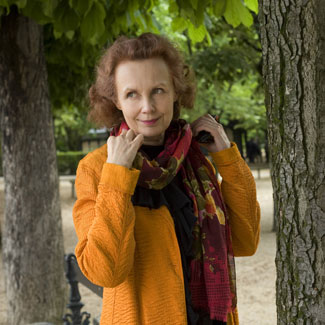
 Kaija Saariaho is a prominent member of a group of Finnish composers and performers who are now, in mid-career, making a worldwide impact. Born in Helsinki in 1952, she studied at the Sibelius Academy there with the pioneering modernist Paavo Heininen and, with Magnus Lindberg and others, she founded the progressive ‘Ears Open’ group. She continued her studies in Freiburg with Brian Ferneyhough and Klaus Huber, at the Darmstadt summer courses, and, from 1982, at the IRCAM research institute in Paris – the city which has been most of the time her home ever since.
Kaija Saariaho is a prominent member of a group of Finnish composers and performers who are now, in mid-career, making a worldwide impact. Born in Helsinki in 1952, she studied at the Sibelius Academy there with the pioneering modernist Paavo Heininen and, with Magnus Lindberg and others, she founded the progressive ‘Ears Open’ group. She continued her studies in Freiburg with Brian Ferneyhough and Klaus Huber, at the Darmstadt summer courses, and, from 1982, at the IRCAM research institute in Paris – the city which has been most of the time her home ever since.
Caroline Shaw
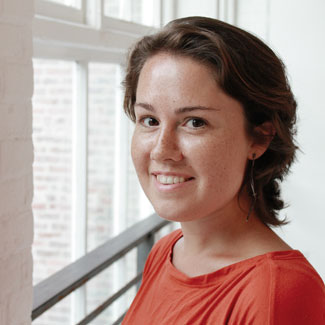
 Caroline Adelaide Shaw is a New York-based musician appearing in many different guises. Trained primarily as a violinist from an early age in North Carolina, she is a Grammy-winning singer in Roomful of Teeth and in 2013 became the youngest ever winner of the Pulitzer Prize for Music, for her enigmatic composition Partita for 8 Voices (also nominated for a Grammy for Best Classical Composition). She will make her solo violin debut in 2015 with the Cincinnati Symphony (MusicNOW).
Caroline Adelaide Shaw is a New York-based musician appearing in many different guises. Trained primarily as a violinist from an early age in North Carolina, she is a Grammy-winning singer in Roomful of Teeth and in 2013 became the youngest ever winner of the Pulitzer Prize for Music, for her enigmatic composition Partita for 8 Voices (also nominated for a Grammy for Best Classical Composition). She will make her solo violin debut in 2015 with the Cincinnati Symphony (MusicNOW).
Christine Southworth, composer
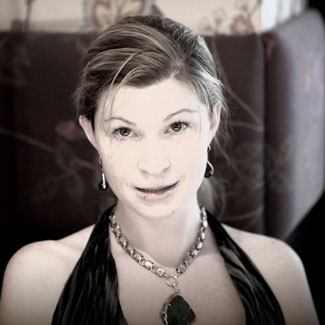
 Christine Southworth (b. 1978) is a composer and video artist based in Lexington, Massachusetts, dedicated to creating art born from a cross-pollination of sonic and visual ideas. Inspired by intersections of technology and art, nature and machines, and musics from cultures around the world, her music employs sounds from man and nature, from Van de Graaff Generators to honeybees, Balinese gamelan to seismic data from volcanoes.
Christine Southworth (b. 1978) is a composer and video artist based in Lexington, Massachusetts, dedicated to creating art born from a cross-pollination of sonic and visual ideas. Inspired by intersections of technology and art, nature and machines, and musics from cultures around the world, her music employs sounds from man and nature, from Van de Graaff Generators to honeybees, Balinese gamelan to seismic data from volcanoes.
Southworth received a B.S. from MIT in 2002 in mathematics and an M.A. in Computer Music & Multimedia Composition from Brown University in 2006. In 2003 she co-founded Ensemble Robot, a collaborative of artists and engineers that design and build musical robots. She is the general manager of the MIT-based Gamelan Galak Tika, and has composed several pieces for the group and performed at venues including Lincoln Center, Carnegie Hall, EMPAC, the Cleveland Museum of Art, several Bang on a Can Marathons, and the Bali International Arts Festival.
Davóne Tines, bass-baritone
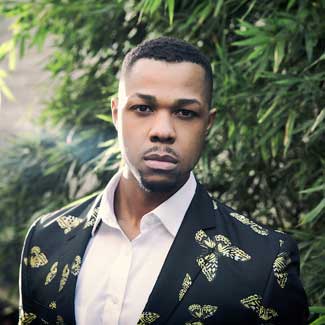
 Davóne Tines, deemed a “… charismatic, full-voiced bass-baritone …” by the New York Times, is building an international career commanding a broad spectrum of opera and concert performance. This past season included appearances with the Boston Pops in Symphony Hall and at Tanglewood, where he was a Tanglewood Music Center Fellow, as well as a debut with the American Repertory Theater in the world premiere of Matthew Aucoin’s opera Crossing, directed by multiple Tony Award–winning director Diane Paulus, for which the Wall Street Journal called him a “glowing bass-baritone” and the Stylus Music Journal said he “… brought the house down with his eloquent and painful singing” in the leading role of Freddie Stowers.
Davóne Tines, deemed a “… charismatic, full-voiced bass-baritone …” by the New York Times, is building an international career commanding a broad spectrum of opera and concert performance. This past season included appearances with the Boston Pops in Symphony Hall and at Tanglewood, where he was a Tanglewood Music Center Fellow, as well as a debut with the American Repertory Theater in the world premiere of Matthew Aucoin’s opera Crossing, directed by multiple Tony Award–winning director Diane Paulus, for which the Wall Street Journal called him a “glowing bass-baritone” and the Stylus Music Journal said he “… brought the house down with his eloquent and painful singing” in the leading role of Freddie Stowers.
YOLA
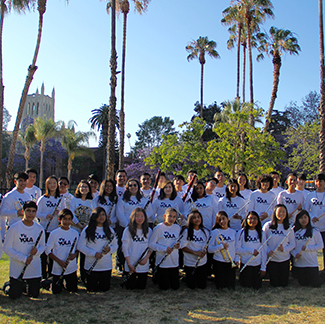
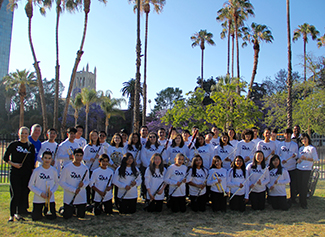 About the YOLA at HOLA Symphonic Winds
About the YOLA at HOLA Symphonic Winds
Through YOLA, the Los Angeles Philharmonic and its community partners provide free instruments, intensive music training, and academic support to students from underserved neighborhoods, empowering them to become vital citizens, leaders and agents of change. Inspired by El Sistema – the Venezuelan music education system that nurtured the LA Phil’s Music Director Gustavo Dudamel – YOLA has grown to serve more than 700 students at three sites across Los Angeles since its founding in 2007.
Comprised of 35 students ages 12 – 18, the YOLA at HOLA Symphonic Winds are founding members of YOLA at Heart of Los Angeles (HOLA). Currently, in its seventh year, the site at HOLA serves students ages 6 – 18 with intensive after-school orchestral instruction five days a week. A holistic approach fosters a sense of community and provides students with the opportunity to take advantage of HOLA’s exceptional programs and resource.
Ethan Treiman, composer
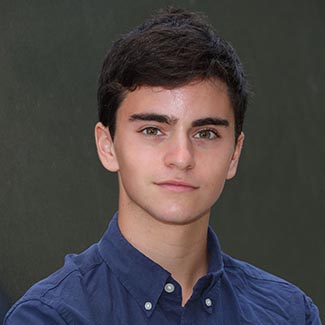
 Ethan Treiman (17) is a junior at Crossroads School for the Arts and Sciences in Santa Monica, California. He is looking forward to beginning his two year fellowship with the Los Angeles Philharmonic Composer Fellowship Program in fall, 2015. At Crossroads, he has taken courses in music theory taught by Mary Ann Cummins and Richard Grayson. Ethan is interested in musical theater and drama and has acted in several theater shows at Crossroads. He has performed with Crossroads’ 21st Street Singers Choir. Ethan draws inspiration from the music of George Gershwin, Claude Debussy, and Alberto Ginastera, along with John Williams and Stephen Sondheim. Ethan enjoys running Cross Country and Track, and hopes to one day compose music for stage and film.
Ethan Treiman (17) is a junior at Crossroads School for the Arts and Sciences in Santa Monica, California. He is looking forward to beginning his two year fellowship with the Los Angeles Philharmonic Composer Fellowship Program in fall, 2015. At Crossroads, he has taken courses in music theory taught by Mary Ann Cummins and Richard Grayson. Ethan is interested in musical theater and drama and has acted in several theater shows at Crossroads. He has performed with Crossroads’ 21st Street Singers Choir. Ethan draws inspiration from the music of George Gershwin, Claude Debussy, and Alberto Ginastera, along with John Williams and Stephen Sondheim. Ethan enjoys running Cross Country and Track, and hopes to one day compose music for stage and film.
Mark Applebaum
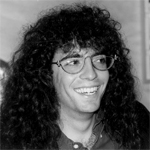 Mark Applebaum (b. 1967, Chicago) is Associate Professor of Composition and Theory at Stanford University where he served as John Philip Coghlan Fellow and received the 2003 Walter J. Gores Award for excellence in teaching. He received his Ph.D. in composition from the University of California at San Diego where he studied principally with Brian Ferneyhough. His solo, chamber, choral, orchestral, operatic, and electroacoustic work has been performed throughout the United States, Europe, Africa, and Asia.
Mark Applebaum (b. 1967, Chicago) is Associate Professor of Composition and Theory at Stanford University where he served as John Philip Coghlan Fellow and received the 2003 Walter J. Gores Award for excellence in teaching. He received his Ph.D. in composition from the University of California at San Diego where he studied principally with Brian Ferneyhough. His solo, chamber, choral, orchestral, operatic, and electroacoustic work has been performed throughout the United States, Europe, Africa, and Asia.
Carlos Chávez
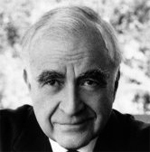 Born 13 June 1899 in Mexico City, Carlos Chávez was a renowned composer, conductor, and educator whose distinctive, often highly percussive music synthesized elements of Mexican, Indian, and Spanish-Mexican influence. A prolific writer of music and music criticism, Chávez’s oeuvre includes five ballets, seven symphonies, four concertos, a cantata and opera, and innumerable pieces for voice, piano, and chamber ensemble; he wrote two books (of which Toward A New Music: Music and Electricity became a major contribution and fundamental document of new musical thought) and more than 200 articles on music.
Born 13 June 1899 in Mexico City, Carlos Chávez was a renowned composer, conductor, and educator whose distinctive, often highly percussive music synthesized elements of Mexican, Indian, and Spanish-Mexican influence. A prolific writer of music and music criticism, Chávez’s oeuvre includes five ballets, seven symphonies, four concertos, a cantata and opera, and innumerable pieces for voice, piano, and chamber ensemble; he wrote two books (of which Toward A New Music: Music and Electricity became a major contribution and fundamental document of new musical thought) and more than 200 articles on music.
Mario Diaz de Leon
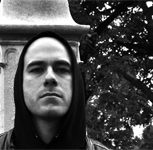 Mario Diaz de Leon has written a body of modern classical works focused on acoustic / electronic hybrids, often expressed as hypnotic walls and gestures of shimmering sound. His influences include the composers Scelsi, Ligeti, Dumitrescu, and Xenakis, free improvisation, underground metal, a wide range of electronic music, and noise / industrial music.
Mario Diaz de Leon has written a body of modern classical works focused on acoustic / electronic hybrids, often expressed as hypnotic walls and gestures of shimmering sound. His influences include the composers Scelsi, Ligeti, Dumitrescu, and Xenakis, free improvisation, underground metal, a wide range of electronic music, and noise / industrial music.
Du Yun
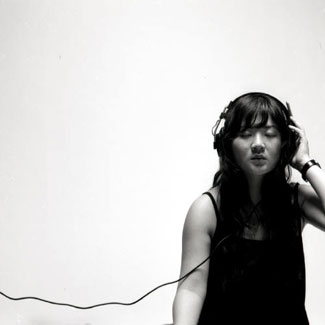
 Born and raised in Shanghai, China, currently based in NYC, Du Yun is a composer, multi-instrumentalist and performance artist. Her music exists at an artistic crossroads of orchestral, chamber music, theatre, opera, orchestral, cabaret, storytelling, pop music, visual arts and noise.
Born and raised in Shanghai, China, currently based in NYC, Du Yun is a composer, multi-instrumentalist and performance artist. Her music exists at an artistic crossroads of orchestral, chamber music, theatre, opera, orchestral, cabaret, storytelling, pop music, visual arts and noise.
Hailed by The New York Times as a leading figure in China’s new generation of composers, Du Yun’s music is championed by some of today’s finest performing artists, ensembles, orchestras and organizations.
Tan Dun
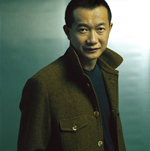 The conceptual and multifaceted composer/conductor Tan Dun has made an indelible mark on the world’s music scene with a creative repertoire that spans the boundaries of classical music, multimedia performance, and Eastern and Western traditions. A winner of today’s most prestigious honors including the Grammy Award, Oscar/Academy Award, Grawemeyer Award for classical composition and Musical America’s Composer of The Year, Bach Prize of the City of Hamburg and Moscow’s Shostakovich Award, Tan Dun’s music has been played throughout the world by leading orchestras, opera houses, international festivals, and on the radio and television.
The conceptual and multifaceted composer/conductor Tan Dun has made an indelible mark on the world’s music scene with a creative repertoire that spans the boundaries of classical music, multimedia performance, and Eastern and Western traditions. A winner of today’s most prestigious honors including the Grammy Award, Oscar/Academy Award, Grawemeyer Award for classical composition and Musical America’s Composer of The Year, Bach Prize of the City of Hamburg and Moscow’s Shostakovich Award, Tan Dun’s music has been played throughout the world by leading orchestras, opera houses, international festivals, and on the radio and television.
Julio Estrada
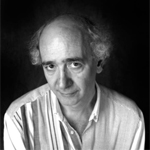 Born in Mexico City in 1943, Julio Estrada’s family was exiled from Spain in 1941. A composer, theoretician, historian, pedagogue, and interpreter, he began his musical studies in Mexico (1953-65), where he studied composition with Julián Orbón. In Paris (1965-69) he studied with Nadia Boulanger, Messiaen and attended courses and lectures of Xenakis. In Germany he studied with Stockhausen (1968) and with Ligeti (1972). He earned a Ph. D. in Musicology at Strasbourg University (1990- 1994).
Born in Mexico City in 1943, Julio Estrada’s family was exiled from Spain in 1941. A composer, theoretician, historian, pedagogue, and interpreter, he began his musical studies in Mexico (1953-65), where he studied composition with Julián Orbón. In Paris (1965-69) he studied with Nadia Boulanger, Messiaen and attended courses and lectures of Xenakis. In Germany he studied with Stockhausen (1968) and with Ligeti (1972). He earned a Ph. D. in Musicology at Strasbourg University (1990- 1994).
Mohammed Fairouz
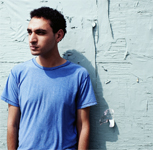 Mohammed Fairouz, born in 1985, is one of the most frequently performed, commissioned, and recorded composers of his generation. Hailed by The New York Times as “an important new artistic voice” and by BBC World News as “one of the most talented composers of his generation,” Fairouz integrates Middle-Eastern modes into Western structures, to deeply expressive effect. His large-scale works, including four symphonies and an opera, engage major geopolitical and philosophical themes with persuasive craft and a marked seriousness of purpose.
Mohammed Fairouz, born in 1985, is one of the most frequently performed, commissioned, and recorded composers of his generation. Hailed by The New York Times as “an important new artistic voice” and by BBC World News as “one of the most talented composers of his generation,” Fairouz integrates Middle-Eastern modes into Western structures, to deeply expressive effect. His large-scale works, including four symphonies and an opera, engage major geopolitical and philosophical themes with persuasive craft and a marked seriousness of purpose.
Suzanne Farrin
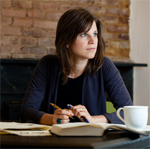 Suzanne Farrin’s music explores the interior worlds of instruments and the visceral potentialities of sound. Her music has been performed by some of the great musicians of today on stages across Europe and North and South America. Tim Page, the former classical music critic of the Washington Post wrote: “If you can imagine the dense, perfumed chords of Messiaen’s piano music combined with the clangorous, insistent, near-pictorial tone-clusters of Frederic Rzewski’s Winnsboro Cotton Mill Blues, you will have some idea of what Farrin’s work sounds like. Yet it transcends its derivations to leave the distinct impression of its own.”
Suzanne Farrin’s music explores the interior worlds of instruments and the visceral potentialities of sound. Her music has been performed by some of the great musicians of today on stages across Europe and North and South America. Tim Page, the former classical music critic of the Washington Post wrote: “If you can imagine the dense, perfumed chords of Messiaen’s piano music combined with the clangorous, insistent, near-pictorial tone-clusters of Frederic Rzewski’s Winnsboro Cotton Mill Blues, you will have some idea of what Farrin’s work sounds like. Yet it transcends its derivations to leave the distinct impression of its own.”
Morton Feldman
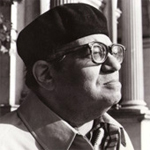 Morton Feldman was born in New York in 1926 and died there in 1987. Just like Cage, a close friend, he was an American composer – an American artist – an American in the true sense of the word.
Morton Feldman was born in New York in 1926 and died there in 1987. Just like Cage, a close friend, he was an American composer – an American artist – an American in the true sense of the word.
He identified himself by differentiating his views on composition from those of his colleagues in Europe. He was proud to be an American because he was convinced that it enabled him the freedom, unparalleled in Europe, to work unfettered by tradition.
Gabriela Lena Frank
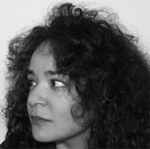 Identity has always been at the center of Gabriela Lena Frank’s music. Born in Berkeley, California, to a mother of mixed Peruvian/Chinese ancestry and a father of Lithuanian/Jewish descent, Frank explores her multicultural heritage most ardently through her compositions. Inspired by the works of Bela Bartók and Alberto Ginastera, Frank is something of a musical anthropologist. She has traveled extensively throughout South America and her pieces reflect and refract her studies of Latin American folklore, incorporating poetry, mythology, and native musical styles into a western classical framework that is uniquely her own.
Identity has always been at the center of Gabriela Lena Frank’s music. Born in Berkeley, California, to a mother of mixed Peruvian/Chinese ancestry and a father of Lithuanian/Jewish descent, Frank explores her multicultural heritage most ardently through her compositions. Inspired by the works of Bela Bartók and Alberto Ginastera, Frank is something of a musical anthropologist. She has traveled extensively throughout South America and her pieces reflect and refract her studies of Latin American folklore, incorporating poetry, mythology, and native musical styles into a western classical framework that is uniquely her own.
Alberto Ginastera
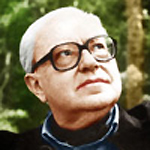 Alberto Ginastera was the leading Argentinian composer of the twentieth century, as important in giving the Argentinian folk heritage a voice in art music as Bartók was in Hungary. Ginastera was born in Buenos Aires on 11 April 1916. He studied musical privately as a child, later enrolling at the National Conservatoire of Music in his home city. His first compositions date from his early youth; he was 22 when his Piezas infantiles for piano won first prize in a competition.
Alberto Ginastera was the leading Argentinian composer of the twentieth century, as important in giving the Argentinian folk heritage a voice in art music as Bartók was in Hungary. Ginastera was born in Buenos Aires on 11 April 1916. He studied musical privately as a child, later enrolling at the National Conservatoire of Music in his home city. His first compositions date from his early youth; he was 22 when his Piezas infantiles for piano won first prize in a competition.
Vinko Globokar
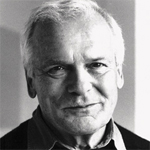 From 13 to 21 years of age Vinko Globokar lived in Ljubljana (Slovenia), where he made his debut as a jazz musician. He subsequently studied trombone at the National Conservatory in Paris (diploma in trombone and chamber music). He studied composition and conducting with René Leibowitz, counterpoint with André Hodeir, and continued his studies with Luciano Berio.
From 13 to 21 years of age Vinko Globokar lived in Ljubljana (Slovenia), where he made his debut as a jazz musician. He subsequently studied trombone at the National Conservatory in Paris (diploma in trombone and chamber music). He studied composition and conducting with René Leibowitz, counterpoint with André Hodeir, and continued his studies with Luciano Berio.
Osvaldo Golijov
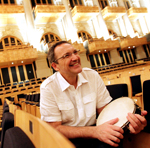 Osvaldo Golijov grew up in an Eastern European Jewish household in La Plata, Argentina. Born to a piano teacher mother and physician father, Golijov was raised surrounded by classical chamber music, Jewish liturgical and klezmer music, and the new tango of Astor Piazzolla. After studying piano at the local conservatory and composition with Gerardo Gandini he moved to Israel in 1983, where he studied with Mark Kopytman at the Jerusalem Rubin Academy and immersed himself in the colliding musical traditions of that city.
Osvaldo Golijov grew up in an Eastern European Jewish household in La Plata, Argentina. Born to a piano teacher mother and physician father, Golijov was raised surrounded by classical chamber music, Jewish liturgical and klezmer music, and the new tango of Astor Piazzolla. After studying piano at the local conservatory and composition with Gerardo Gandini he moved to Israel in 1983, where he studied with Mark Kopytman at the Jerusalem Rubin Academy and immersed himself in the colliding musical traditions of that city.
Michael Gordon
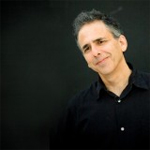 Michael Gordon’s music merges subtle rhythmic invention with incredible power embodying, in the words of The New Yorker‘s Alex Ross, “the fury of punk rock, the nervous brilliance of free jazz and the intransigence of classical modernism.”
Michael Gordon’s music merges subtle rhythmic invention with incredible power embodying, in the words of The New Yorker‘s Alex Ross, “the fury of punk rock, the nervous brilliance of free jazz and the intransigence of classical modernism.”
Over the past 25 years, Gordon has produced a strikingly diverse body of work, ranging from large-scale pieces for high-energy ensembles to major orchestral commissions to works conceived specifically for the recording studio. Transcending categorization, this music represents the collision of mysterious introspection and brutal directness.
